






























A Clearance Diving Officer from Fleet Diving Unit (Pacific) (FDU(P)) cleared Second World War relics in the South Pacific waters.

Lieutenant (Navy) Michael Allport, FDU(P)’s Operational Dive Team Leader, assisted the Australian Defence Force (ADF) in an international effort to locate the Second World War ordnance off the coast of Tuvalu Sept. 7-14.



“Working around explosives always poses risk but these bombs were unfused, so we were basically look ing for large masses of steel and explosives on the sea bed,” Lt(N) Allport said.
Lt(N) Allport was part of an international contin gent that combed the sea floor for explosives as part of a reconnaissance mission titled Operation Render Safe

Render Safe is an ongoing effort led by the ADF to clear explosive remnants of war from Pacific Island communities. During the Second World War, the South Pacific saw heavy fighting and various Pacific Islands were used as a support and ammunitions base. As a result, unexploded munitions remain there today.
The Canadian Armed Forces (CAF) normally
participate in Render Safe every two years. This year’s mission also included members of the Royal New Zealand Navy (RNZN) and the United States Marine Corps (USMC) working aboard HMNZS Manawanui
“Our mission was a great success,” Lt(N) Allport said. “It’s very rewarding to work alongside allied nations, working to restore safety to the South Pacific.”
The operation saw the contingent scan more than 2.5 kilometres of the sea floor in over 47 hours of dive time. They identified 22 AN-M43 500 lbs aerial bombs and four .50 calibre small arms dumps at depths of 10-18 metres.
Lt(N) Allport was embedded with a team of New Zealand divers for the search effort. He said searches for unexploded munitions were done using diverheld Shark Marine sonar technology and visual searches in depths under 30 metres. The team used an underwater scooter to traverse the ocean floor, enabling them to cover larger areas of their grid search in a shorter time.
The disposal of the discovered explosive remnants of war is currently planned for 2023, said a spokes person from the ADF.
Commander (Cdr) John McQueen RNZN, Commanding Officer of Manwanui, said Operation Render Safe was the first time his ship has operated with an embarked international force, with combined detached diving and military hydrography events.
“Operation Render Safe has been a successful event for us as we proved capability, enhanced our ability to operate with our multinational partners, and could make a real difference to our Pacific neighbours,” Cdr McQueen said.
FDU(P) reminds Lookout readers that the Clearance Diver trade is open to all CAF NonCommissioned Members with or without prior CAF diving experience. For more information about becoming a Clearance Diver, contact goclearance diver@forces.gc.ca
A clearance diver locates an aerial bomb during Operation Render Safe near Tuvalu, Sept. 7–14. The multi-national reconnaissance effort helped identify 22 AN-M43 500 lbs aerial bombs and four .50 calibre small arms at depths of 10– 18 m.
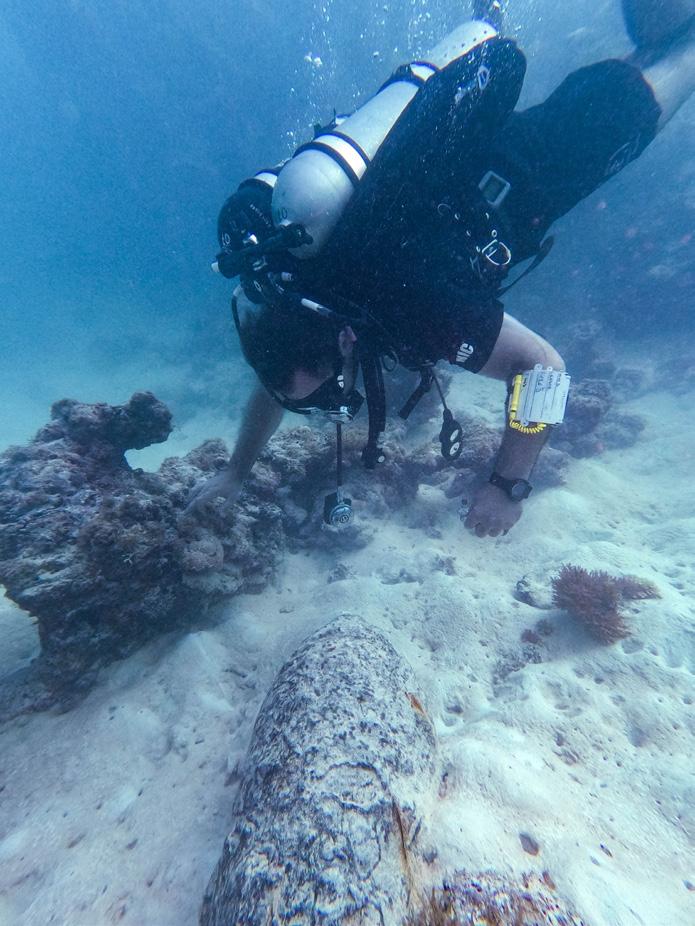
Sailors continue finding ways to promote unit solidarity as the Base eases out of the pandemic.
For HMCS Regina, that meant don ning custom-made purple shirts dur ing the September Formation Run.
“HMCS Regina created custom purple T-shirts for the Regina Fitness Team for this event to encourage soli darity and pride within the unit,” said Sub-Lieutenant (SLt) John Altura,



Sports Officer with HMCS Regina “We wear the purple proudly and sup port each of our members profession ally and personally.”
HMCS Regina wore purple and gold shirts to reflect the unit’s official colours.
Organized by Personnel Support Programs (PSP) and geared specific ally to those working on the Base, the Royal Canadian Navy (RCN) Formation Run is a monthly event (except December) on the last Friday
of the month. It is a 5-km run/walk to encourage maximum participation across the fleet.
SLt Altura said the concept of cus tom shirts for the ships’ company had been a long-standing tradition for varying units across the fleet.
“As part of the RCN, we tend to move around different units through out our career. Having a keepsake from a sailor’s time in that particular unit is a reminder of the hard work and sacrifice it takes to be part of that
team,” he said.
Alyssa Jesson, Fitness and Sports Manager at CFB Esquimalt’s PSP, said the run on Sept. 23 at CFB Dockyard/ CFB Naden saw the biggest turnout this year, with 261 participants.
“The Formation Run provides an opportunity to come together outside of the office, and to enjoy fresh air while participating in physical activ ity,” Jesson said.
Commander Meghan Coates, HMCS Regina’s Commanding

Officer, said events like this are signifi cant to CAF members.
“Here in HMCS Regina, we endeavor for a healthy work-life bal ance, which is the key to a healthy professional life,” she said. “The run was a success, and it’s a great beginning for HMCS Regina to rebuild its team as we come out of refit.”
PSP keeps track of attending units and posts the top three female and male runners on the MARPAC splash page.

 Kateryna Bandura Lookout Editor
Kateryna Bandura Lookout Editor
HMCS Edmonton’s crew left Esquimalt wat ers mid-September to visit their namesake city. Nine members of the ship’s company trav elled to the prairies Sept. 26 to mark the 25th anniversary of Edmonton’s commissioning. “As we’ve yet to find a way to navigate the ship across the Rocky Mountains, visits like this are the next best way to learn more about the city, and have its residents meet their sailors,” said Sub-Lieutenant (SLt) Gordon Emerslund, Deputy Operations Officer with HMCS Edmonton
HMCS Edmonton is the first and only ship in the Royal Canadian Navy to carry that name. SLt Emerslund said the five-day trip was an excellent opportunity to strengthen an incredibly strong connection with the City of Edmonton and its people. The crew was busy with a flurry of engagements, including tours of the City Hall and the Alberta Legislature, and
visits to local public schools and cadet units.
“Edmonton has such a vibrant community, and the city staff were invaluable in helping us coordinate our plans,” SLt Emerslund said.
One major highlight of the week’s trip was a visit to Norwood School, where members vol unteered to prepare and serve food to students through a meal program run by the charity E4C. The crew used the occasion to present E4C with a cheque for $1,000 from the ship’s charity fund.
Another highlight was meeting the ship’s sponsor, Mrs. Esther Starkman, who served in the role since 1996.
The crew had two residents of Edmonton city: Sailor Third Class Class Joseph Wright and Aviator Anna Brittain. They proved to be great ambassadors to the city and had a chance to visit their families.
“The namesake city visit was a great occasion for us to engage with the city and community who’ve so generously bestowed upon us their name,” SLt Emerslund said.

Manager
Jazmin Holdway 250-363-3372 Jazmin.Holdway@forces.gc.ca

editor
Kate Bandura 250-363-3130 kateryna.bandura@forces.gc.ca
Writer Peter Mallett pkmallett@shaw.ca
ProdUC tion
teresa Laird 250-363-8033 production@lookoutnewspaper.com
Leslie eaton 250-363-8033 workstation3@lookoutnewspaper.com
aCCoU nt S / reC eP tion trina Winters 250-363-3127

advertiSing rePreSentative
Joshua Buck 778-977-5433 sales@forcesadvertising.com
editoriaL adviSor Capt Jeff Klassen 250-363-4006


Published each Monday, under the authority of Capt(N) J. Jeffrey Hutchinson, Base Commander.


Le LOOKOUT est publié tous les lundis, sous l’égide du Capv J. Jeffrey Hutchinson, Commandant de la Base.
The editor reserves the right to edit, abridge or reject copy or advertising to adhere to policy as outlined in PSP Policy Manual. Views and opinions expressed are not necessarily those of the Department of National Defence.
Le Rédacteur se réserve le droit de modifier, de condenser ou de rejeter les articles, photographies, ou annonces publicitaires pour adhérer au Manuel des politiques des PSP. Les opinions et annonces exprimées dans le journal ne réflètent pas nécéssairement le point de vue du MDN.



The terms port and starboard are asso ciated with a ship’s left and right sides when facing forward. While these two words are widely accepted as a part of modern nautical vernacular, their origin is lesser known. Newcomers often won der why the two sides of a ship have such dissimilar names, not realizing this was done by design.

Historically, starboard is derived from the term ‘steerboard,’ which refers to a steering oar commonly housed on a ves sel’s right side. Before rudders, a ship was steered using a long oar, or sweep oar, fitted on the right side of the ship near the stern. Vikings were known to use a steering oar, and it needs to be clarified why they chose the right side. There is a thought that because the vast majority of people are right-handed, the steering oar was designed for use by right-handed mariners. Regardless, a steering oar on the right became universal. Over time, steerboard became starboard, and it did so with out any connection to celestial objects.
With a steering oar on the right side of the vessel, it was awkward to put a ship alongside a jetty on the right side, so the ship’s left side was used for this purpose. Typically, a plank was put across from ship to shore where personnel and goods could be transferred, and this plank was called a ladeboard or loadboard and later transformed into a larboard
To avoid confusion between the terms larboard and starboard, larboard was eventually changed to port, which had been a common term since the 16th century. In 1844, the Royal Navy made it official by ordering that ‘port’ be used instead of ‘larboard’ about the left side of a ship. Since

then, port and starboard have gained gen eral acceptance as terms for a ship’s left and right sides.
Ships carried lights (lanterns) for many years and were known to show a white light whether underway or at anchor. There were no official rules about the use of lights until 1824, when two white lights were required to be shown in ships navigating the canals of the Netherlands and Belgium. In 1845, the Royal Navy ship HMS Comet conducted experi ments at Spithead with a red light to mark the port side and a green light to mark the starboard. Soon, it was regu lated that red and green running lights should be used on all ships to indicate port and starboard. Similar lights are also used in aviation, with a plane’s right wingtip displaying a green light and the left wingtip dis playing a red light.
Green-to-green is a term that describes two vessels safely passing on their starboard and is derived from the green navigation lights on the ships’ starboard sides. Similarly, red-to-red describes two vessels safely passing on their port.
Red and green running lights are usually electrically powered, which might not be initially obvious to a junior sailor who is asked to fetch ‘green oil’ for the starboard run ning light. Many novices have fallen for this type of ruse, commonplace when a more senior sailor takes advantage of a recruit’s eagerness to fulfill orders and a proclivity to learn their duties. Admittedly, I still need to find that box of radar contacts I was once asked to locate.
You will find over 4,000 examples of Jackspeak in my book Jackspeak of the Royal Canadian Navy (2nd ed.).
The author of ‘Jackspeak of the Royal Canadian Navy’ and ‘Whiskey 601’, Mark Nelson
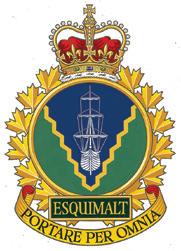
retiring as a Chief Petty Officer Second
a love of the Navy's language and lifestyle over his 26-year
a Library Systems Specialist at Red River College Polytechnic
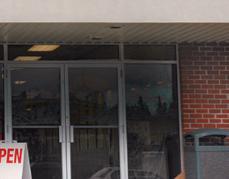


“Newcomers often wonder why the two sides of a ship have such dissimilar names, not realizing this was done by design.”
~ Mark Nelson, Chief Petty Officer Second Class (Retired)

















October is recognized internationally as LGBT History Month.



It encourages Canadians to learn about the history, contributions, and influence of Two-Spirit, Lesbian, Gay, Bisexual, Transgender, Queer, Intersex, and other sexual and gender identities (2SLGBTQI+) citizens and communities.
We encourage the entire Defence Team to reflect on the contributions of past and present 2SLGBTQI+ Defence Team members who have led us with courage, loyalty and integrity in the service of Canada. We acknowledge our collective and indi vidual responsibility to ensure that 2SLGBTQI+ members are thoughtfully considered, supported, and included in the workplace and among our ranks.
This year marks the thirtieth anniversary of the settlement of Michelle Douglas’ historic law suit against the Department of National Defence (DND). It marked the official end to the ban on 2SLGBTQI+ members in the Canadian Armed Forces (CAF). Despite this landmark victory, the systemic discrimination, abuse, and termination of


CAF members, Royal Canadian Mounted Police (RCMP) and federal public service believed to be 2SLGBTQI+ continued throughout much of the following decade. This practice came to be known as the LGBT Purge.
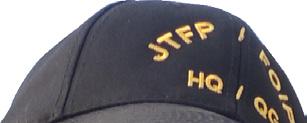
In 2021, the LGBT Purge Fund published a report titled “Emerging from the Purge: The state of LGBTQI2S Inclusion in the Federal Workplace and Recommendations for Improvement”. It showed that, while the Defence Team has made signifi cant strides in several areas of 2SLGBTQI+ inclu sion, there are many opportunities for continued improvement.




Michelle Douglas, now Executive Director of the LGBT Purge Fund, said that emerging from the Purge is the roadmap for change.
“It will take coordinated, deliberate, and effect ive efforts to promote sustainable culture change and foster truly inclusive workplaces across the Government of Canada,” she said.


The Defence Team joins all Government of Canada departments and agencies in taking account ability for its wrongdoings towards sexually- and gender-diverse Canadians. The Defence Team is ready to lead in the fight for the rights and equality of 2SLGBTQI+ communities across Canada and the world.


Each year during Veterans’ Week, from Nov.








and honour the
individuals who served our country in the past, and recognize those who serve in uni form today.

The National Veterans’ Week


Program provides an opportunity for Canadians to connect with active military members and understand better how members of the Canadian Armed Forces (CAF) continue contributing to their local communities and on the inter national stage.



Members are encouraged to take advantage of the opportunity to speak to and connect with their communities by reaching out to local schools and other civic organizations with whom they are affiliated.


To help prepare for their speaking engagements, members are encouraged to access tools such as Speeches and Powerpoint. All the resources are located here: dgpaapp.forces.gc.ca/en/vet/speaker/index.asp.

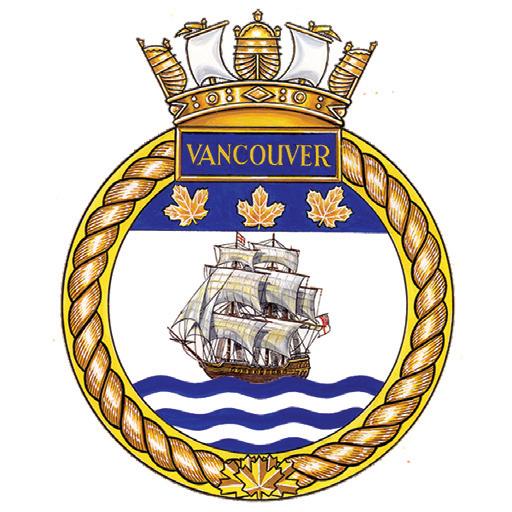









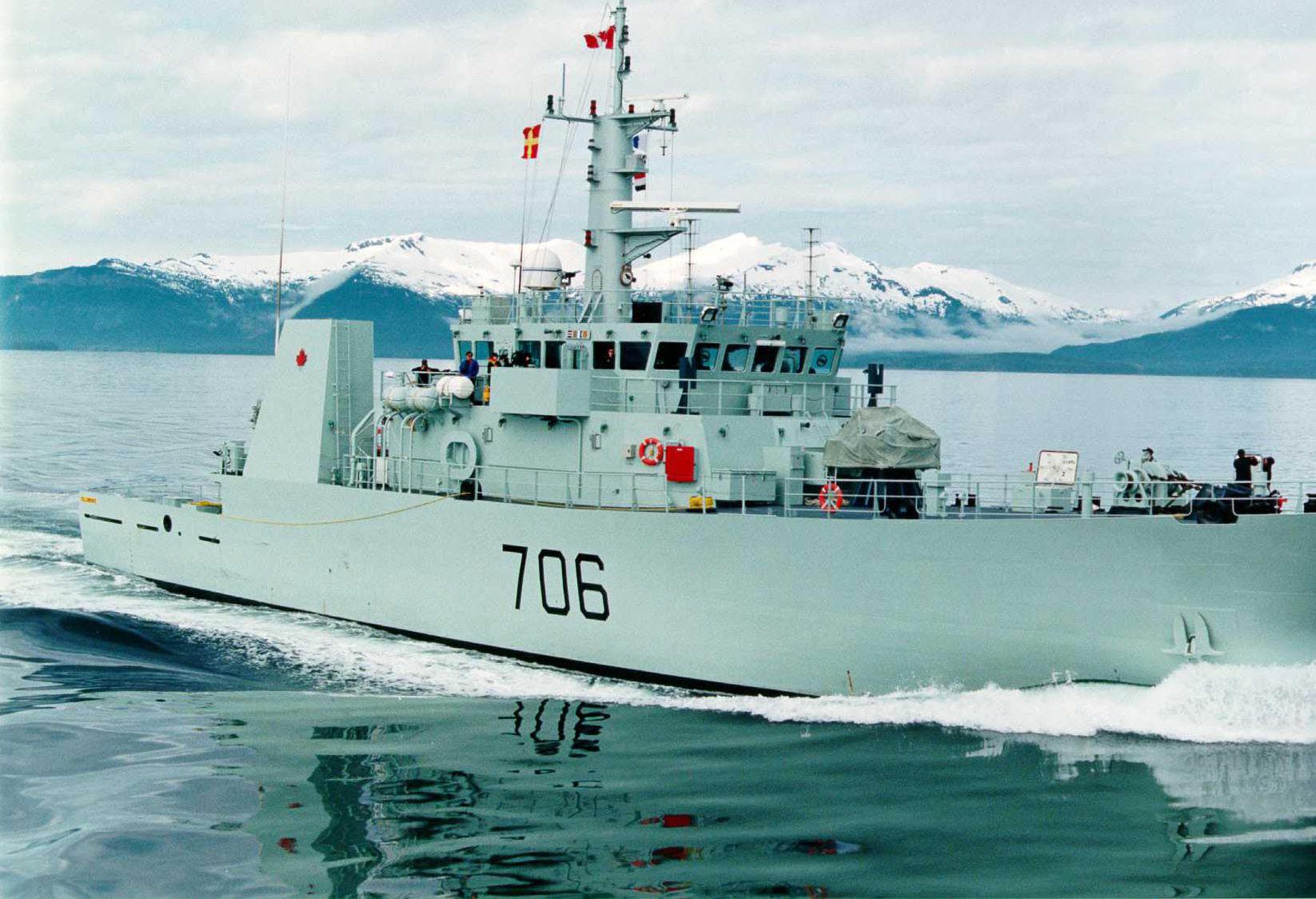

The Royal Canadian Navy and the Canadian Coast Guard (CCG) successfully assessed sev eral well-known shipwrecks around Vancouver Island.
HMCS Yellowknife supported three members of the Fleet Diving Unit (Pacific) (FDU(P)) and two CCG personnel in locating and surveying two wrecked vessels for potential environmental damage to the Island’s west coast Oct. 3-7.
“The mission objectives were met; the CCG team could make an educated assessment of the Vanlene wreck, and, as a bonus, we verified the containment measures on Motor Vessel (MV) Scheidyk were intact,” said Chief Petty Officer Second Class (CPO2) Craig Elliott, Sea Bed Intervention Systems Chief at FDU(P).
MV Scheidyk cargo vessel sank in 1968 after striking a submerged ledge on the south side of Bligh Island. The CCG had spent considerable time and effort cleaning up and containing it over the past few years, CPO2 Elliot said. The team’s mission was to inspect the containment measures and verify that no additional leaks were present.
CPO2 Elliot said the original plan was to sur vey the wrecks of Vanlene, Ernest Todd, and Squamish Queen around Barkley Sound.
“After successfully surveying the Vanlene, we conducted a search and determined that the pos ition of the Ernest Todd and Squamish Queen were erroneous, and that the likelihood of locating them was very low,” he said.



Both units embarked ROVs (remotely operated underwater vehicles), controlled by Yellowknife, providing sonar and camera imagery.

“The FDU(P) team operated the Seabotix vectored Little Benthic Vehicles (vLBV) 350 ROV to cap ture sonar and video images of the wrecks to help Paul Barrett, CCG Superintendent Incident Management, assess the potential pollution risk,” CPO2 Elliot said.

“Cameron Knight, CCG Diving Safety Officer, was the most experienced ROV operator in the group and provided outstanding coaching to our team while we operated the Seabotix.”

CPO2 Elliot said this was an excellent oppor tunity to work together on a small but meaningful project with tremendous support from HMCS Yellowknife
“It shouldn’t be understated that Yellowknife’s crew was outstanding, flexible to changes on the fly, and everyone on board seemed interested and supportive of the mission,” he said.


Lieutenant (Navy) Phillip Hopkins, Operations Officer with HMCS Yellowknife, liaised with both teams to ensure Yellowknife was positioned cor rectly to aid in their search and survey. Yellowknife anchored in the vicinity of several wrecked vessels while FDU(P) and CCG personnel assessed the vessels.
“Yellowknife did an amazing job supporting the embarked team,” Lt(N) Hopkins said. “Both the CCG and FDU seemed very happy with the suc cess of the surveys they conducted.”
The mission helped the FDU(P) team better understand what to look for on the next wreck survey, CPO2 Elliot said. The team already has a list of several wrecks to inspect next and looks forward to continuing working with the CCG in 2023.
BC Bereavement Helpline: Support, info and referrals for those who are grieving. 1-877-779-2223
BC Mental Health Info Line: Support or referral for mental health issues. 250-310-6789 (24hrs)
BC Schizophrenia Society: Support, education, and info about schizophrenia and other serious/persistent mental illness. 250-384-4225
Base Mental Health Services: Members are encouraged to go to sick parade or their integrated health teams IHTs for mental health services.

Mood Disorders Association of BC: Peer support and education for people with a mood disorder, their families and friends.
1-604-873-0103
Victoria Brain Injury Society: Support for persons with Acquired Brain Injury and their families and friends. 250-598-9339
B.C. Psychological Association Referral Service: 1-800-730-0522
Citizens Counselling Centre: A sliding fee scale available Days, evenings, and weekends. 250-384-9934
Pacific Centre Family Services Association: 1-866-478-8357
Faith, Spirituality, grief and loss. 250-472-2851
VI Crisis Line: 1-888-494-3888
Employee Assistance Program (EAP): Provides confidential info, support, and referral services to civilian employees experiencing personal difficulties. 250-363-7968 (CIV)
Member Assistance Program (MAP): Counselling assistance for CAF members and their families. FREE. 1-800-268-7708
Military Family Resource Centre (MFRC): Programs and services that address the unique military lifestyle. 24 hr. info line: 250-363-2640 or 1-800-353-3329
the Formation Chaplains: Chaplains are religious professionals who help CAF members of all faiths and belief systems by listening without judgement, responding to crisis situations, assisting with life rituals and exploring life’s meaning and purpose. 250-363-4106
one
with amazing teams and people from all walks of life.”
youth.
Chief Petty Officer Second Class (CPO2) Andy Hewlett knew he was meant for a life of service from the moment he saw an air cadet handing out poppies at a local grocery store.

“I’ve been in uniform since I was 12,” he said. “Those first few years as an air cadet taught me about citizen ship, leadership, drill, and community service.”
Following his six years as an air cadet, CPO2 Hewlett joined the CAF on July 5, 2002, as a member of the Royal Canadian Air Force, and after two years of service, he joined the Royal Canadian Navy (RCN). This past July, CPO2 Hewlett celebrated 20 years of service with the CAF while deployed with HMCS Halifax on Operation Reassurance
CPO2 Hewlett said being at sea while celebrating his ‘20-year adventure’ felt significant.
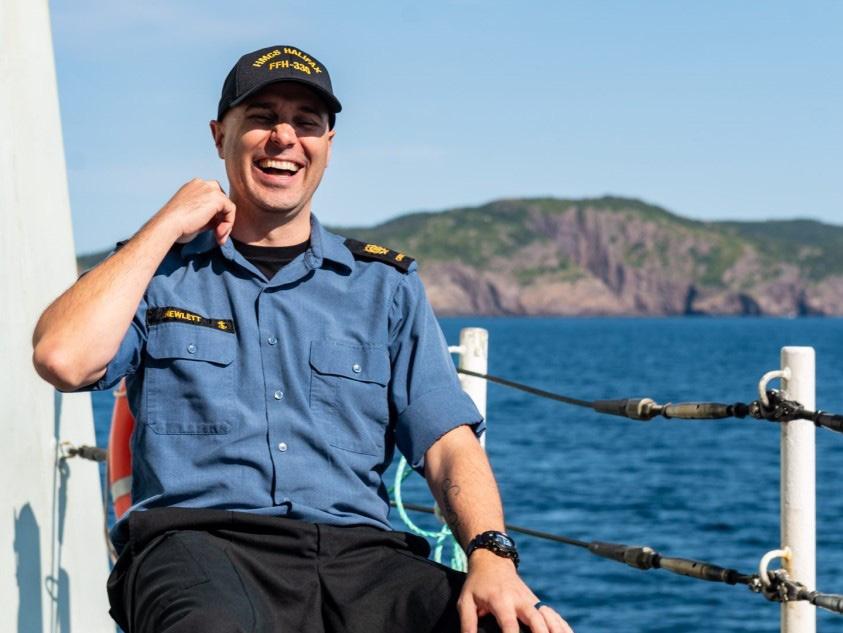
“I believe in the CAF and RCN, and the missions we participate in. I believe in the values that we stand up for,” he said. “I’m lucky to spend my days
CPO2 Hewlett joined HMCS Halifax as the ship’s Operations Chief in mid-June, having previ ously been posted to Canadian Joint Operations Command in Ottawa.
Over the past two decades, CPO2 Hewlett has seen a lot of changes, espe cially surrounding diversity and inclu sion — and he’s played a key role in championing that change.
In 2006, he was the first CAF mem ber to march in a Pride parade and held the Pride flag while in uniform. As the Halifax Pride parade coordinator the following year, he advocated for the RCN to have a marching contin gent and celebrated when a message was released authorizing members to attend the parade as spectators while in uniform.
Over the coming years, CPO2 Hewlett said he’s continued to cele brate as CAF members were authorized to march together as proud members of their community and as Pride flags have been raised at CAF bases across the country and on naval ships.
“It’s amazing to see how we have evolved as a society, and as an institution.”
It’s amazing to see how we have evolved as a society, and as an institution.”
~Chief Petty Officer Second Class Andy Hewlett
the best possible support to our members.”

The MFRC is an independ ent, non-profit charitable organization at Canadian Armed Forces bases and wings across the country, addressing the needs of Canada’s military families.

statue at Ships Point in down town Victoria.
Capt Greaves said volun teering his time with the nonprofit was a natural decision.
Access & Privacy Office at Vancouver Island Health Authority;
Peter Mallett Staff Writerof





Captain (Capt) Braden Greaves
elected to the
vote at the MFRC’s Annual General Meeting (AGM) on Sept. 28.

has been an MFRC Board of Directors member for the past four years.
The MFRC Board of Directors is a governance body of up to 12 members, supporting the MFRC by establishing policy and setting long-term goals. The Board is guided by the Societies Act of British Columbia and is responsible to the military family community. The Base, Fleet, and Formation Chiefs guide the Board as ex-officio members while the Board provides strategic direction to the MFRC.
“I am excited to bring my knowledge and experiences as a serving member, former military spouse, and lawyer to the board and give back to the community,” he said.
His goals for the MFRC include maintaining its excel lent relationship with base leadership, expanding the MFRC programming at the Colwood Pacific Activity Centre (CPAC), and continu ing to press for more Military Family Support (MFS) fund ing to enable the MFRC to support military families in the community better.
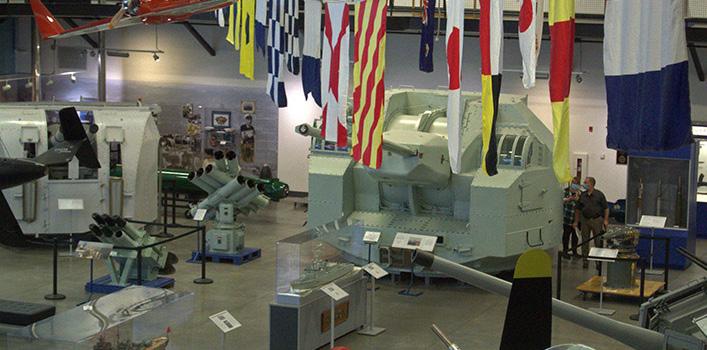

• Erin Walsh, a lead ana lyst with the Ministry of Public Safety and the Solicitor General of British Columbia;
• Emily Zhong, a civil ian employee of the Department of National Defence (DND);
• Kateryna Bandura, Lookout Newspaper editor;
• Christine Richard, Executive Assistant at Royal Roads University;
• Kayla Whitesel, Senior Business Solutions Analyst for Regroove Solutions of Victoria and Canadian Army Reservist with 39 Signal Regiment.
to

with a pas sionate group of people who all share my commitment to
military families,”
said. “I am also grateful for the support and confidence of other members and am excited to work with them to ensure the MFRC provides
During the AGM, the Board bid farewell to two long-term members: Samantha Krzywonos, who served the board as a mem ber and Chair for the last ten years, and Kathy Cook, who served as Treasurer for the last ten years. Jackie Carlé, MFRC Executive Director, said the two will be acknow ledged with a commemora tive brick at the Homecoming
Other members of the M f RC Board of Directors include:
• Vice-Chair: Leta Martin, Vancouver Island Health Authority employee;
• Treasurer: Glen Thomas, a retired Naval Logistics Officer with 37 years of service in the RCN;
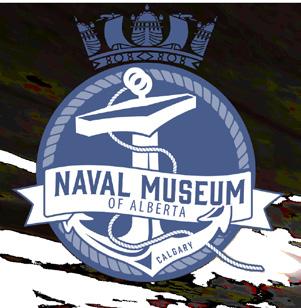
• Secretary: Megan Chong, Privacy Specialist in the Information Stewardship,
Carlé said Board members always displayed dedication to the Esquimalt MFRC.
“Serving on the board can be a very demanding and rewarding experience, and I am looking forward to work ing with such a dynamic and diverse group of people,” she said.

For more information about the MFRC, its pro grams and support, visit esquimaltmfrc.com
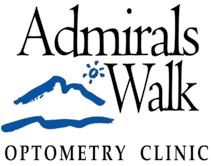
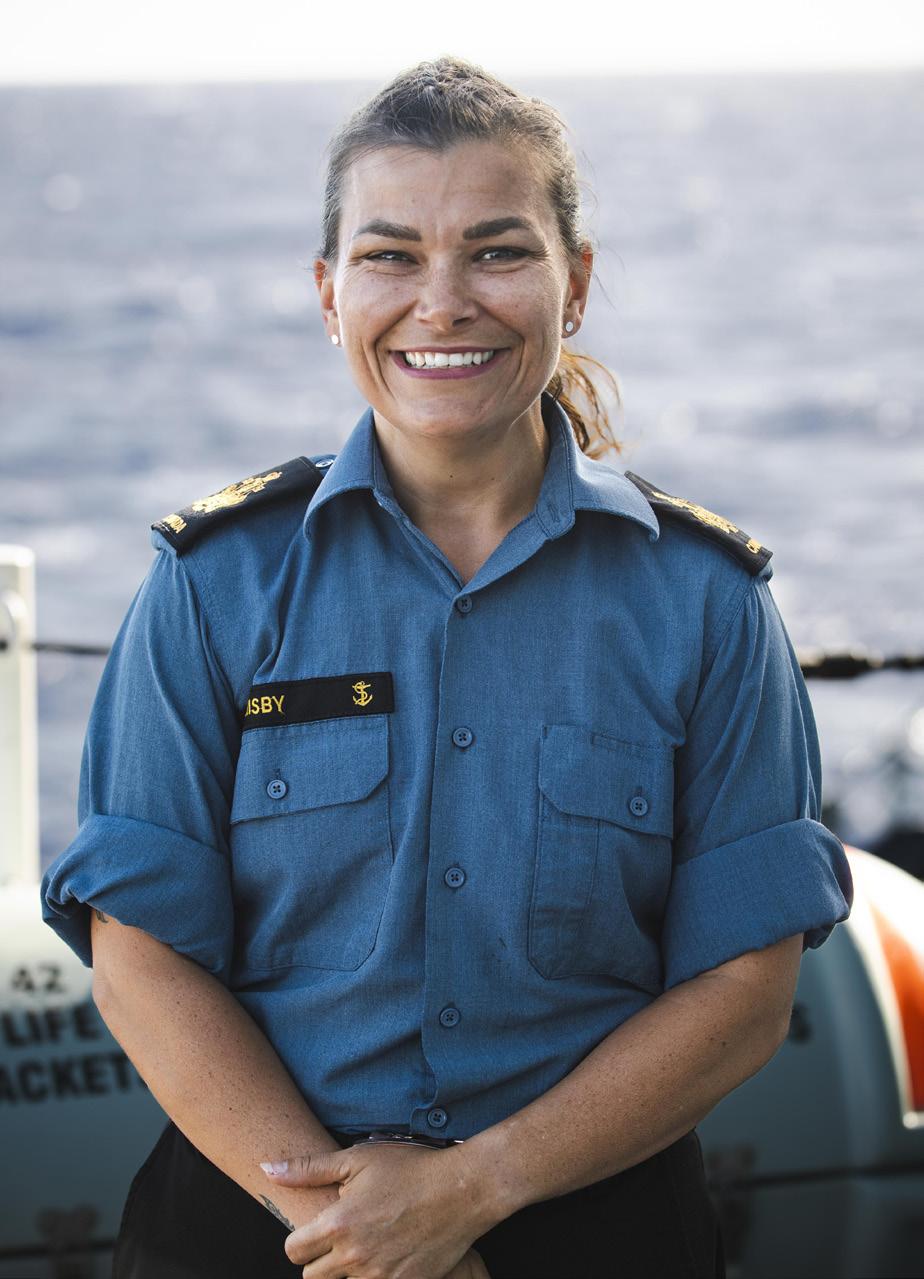 Capt Christine MacNeil HMCS Winnipeg PAO
Capt Christine MacNeil HMCS Winnipeg PAO
I was raised in Corner Brook, Nfld. I was a mem ber of the 511 Humber Royal Canadian Air Cadet Squadron for seven years. The cadets offered me many opportunities, such as training camps in the summers, including General Training, Basic Survival, and Survival Instructor. After graduating from Herdman Collegiate in 1997, I thought travelling the world and being paid would be awesome, so I decided to join the Canadian Armed Forces.

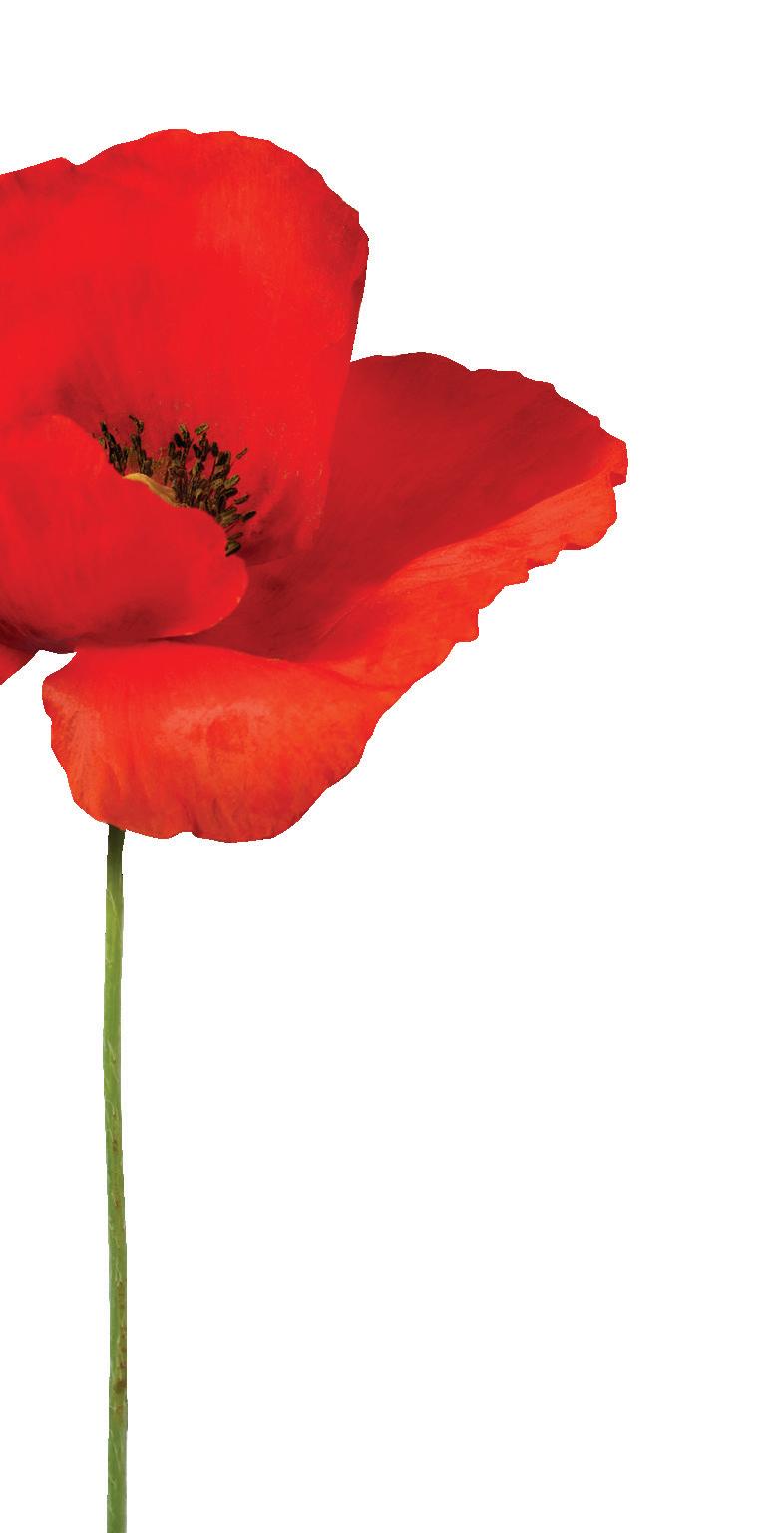
I was supposed to start Basic Military Qualification Training (BMQT), known as Boot Camp or Basic Training, in St. Jean, Que., in January 1998. However, due to the ice storm in Quebec that year, it was delayed until April.
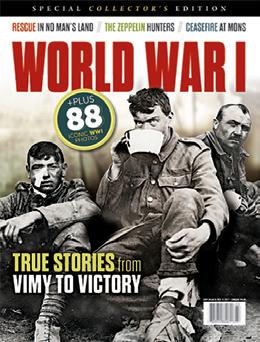
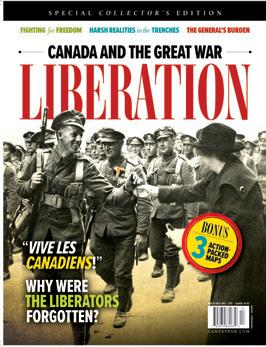

After completing BMQT, I was sent to Canadian Forces Base (CFB) Esquimalt, B.C., for the Naval Acoustics Operator (now Sonar Operator) course. As I advanced through the trade, more classes, as well as promotions, followed.
In May of 2021, I was promoted to Chief Petty Officer First Class, the highest rank for a non-commissioned member (NCM) in the CAF. I was posted to Maritime Forces Pacific as the Headquarters Chief. In February of 2022, I was posted to HMCS Winnipeg as the Coxswain,

the pinnacle of the Royal Canadian Navy NCM’s career.




I am responsible for morale, welfare, and our crew’s good order and discipline. People are my job and the best part of it. Through my leadership and mentorship, future generations should feel empowered to be their best and do their best to make this organization thrive.
My favourite part of the job is the people and our potential as an organization.

Over the years, I have sailed on both frigates and war ships and deployed many times, including Operation Apollo on HMCS Ottawa in 2002.
A long way from home, I’m currently in the South China Sea as part of a six-month deployment on board HMCS Winnipeg.
My most memorable/coolest experience/opportun ity cannot be limited to one thing. Jumping out of a helicopter in the middle of the ocean is pretty darn cool. Simulating wargames off the coast of Hawaii and firing exercise torpedoes at real submarines are also pretty cool.
Visiting places such as Thailand, China, Hong Kong, UAE and many more – is super cool, but it always comes back to the people I have met and memories I have built with lifelong friendships I would never have known had I never signed up.
Presentation of Canadian Forces Decoration to Base Information Services. Presented by Commodore Paul Frisby on Oct. 4. Photos: Sailor Third Class Bissanthe, BIS-OR





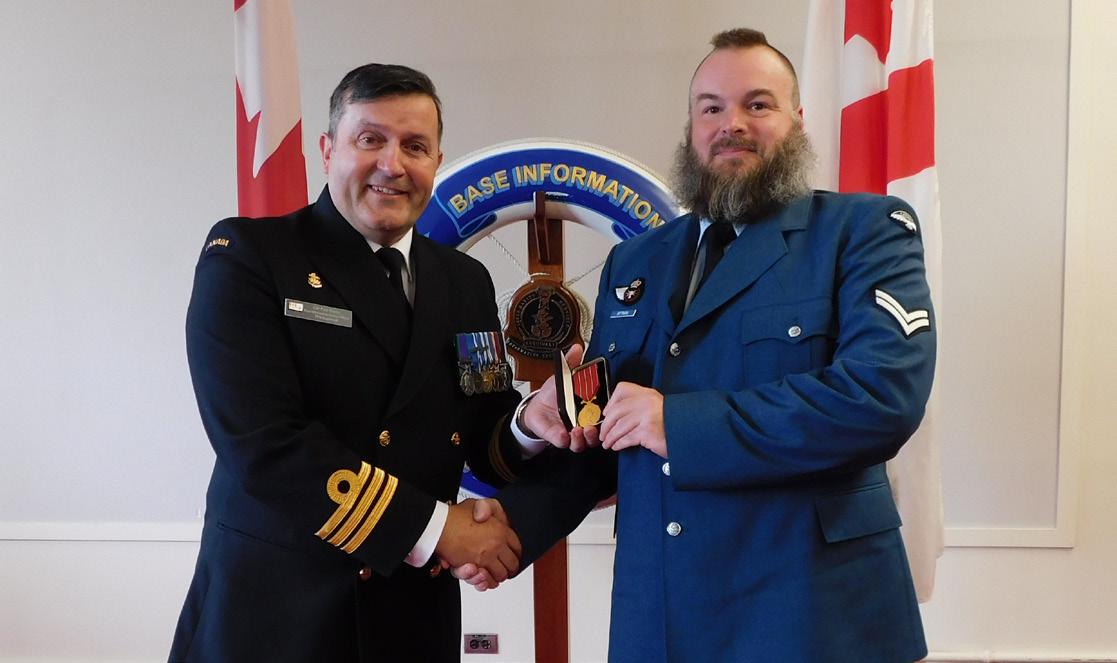
go out to the following individuals:
s
s
m
s
m
s
s
First m i

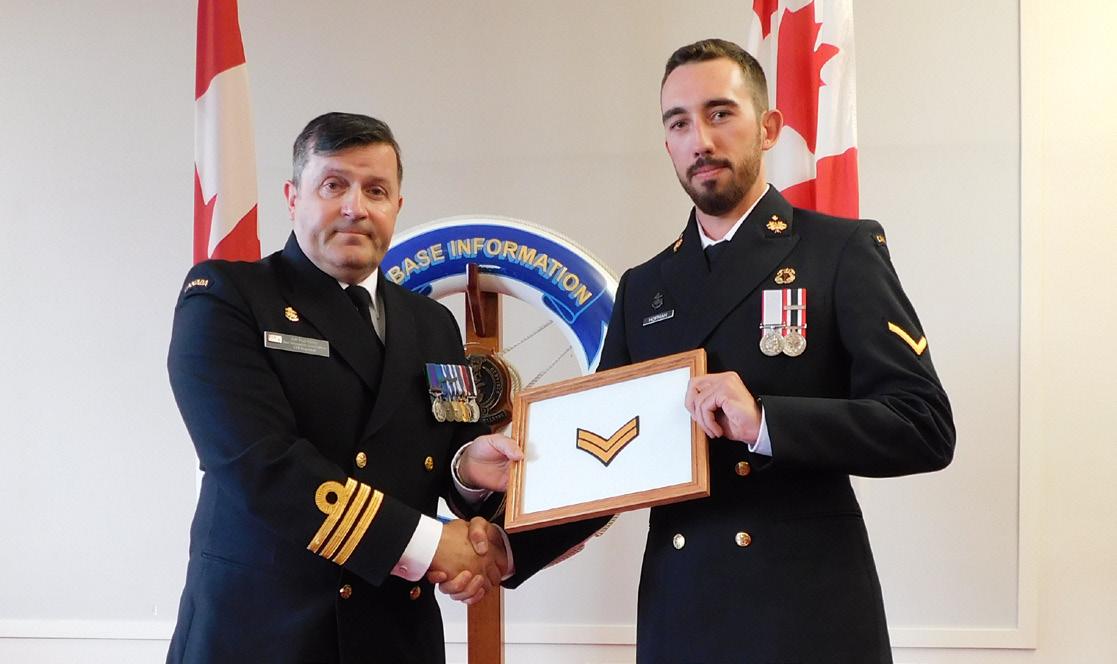
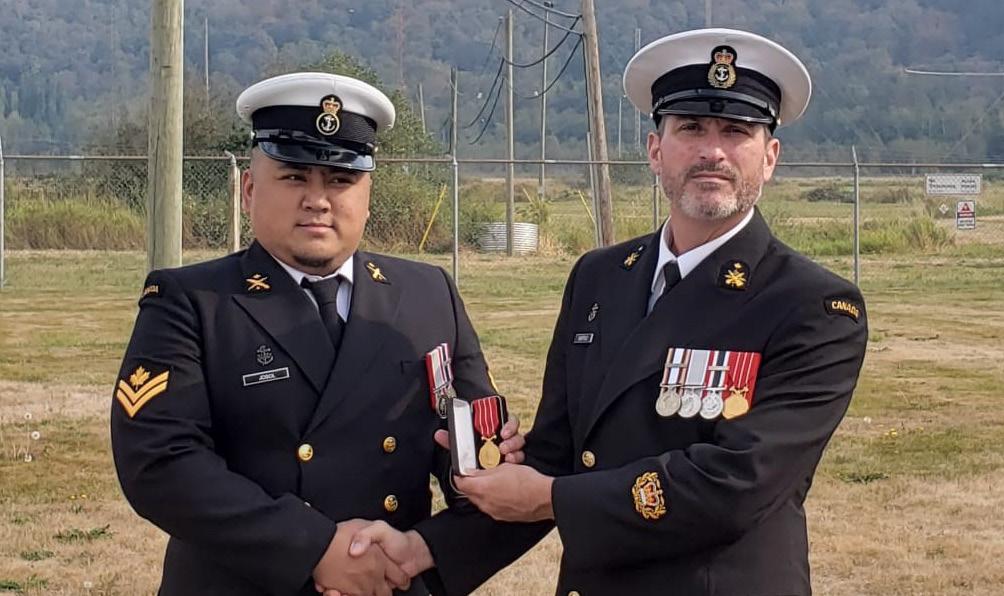


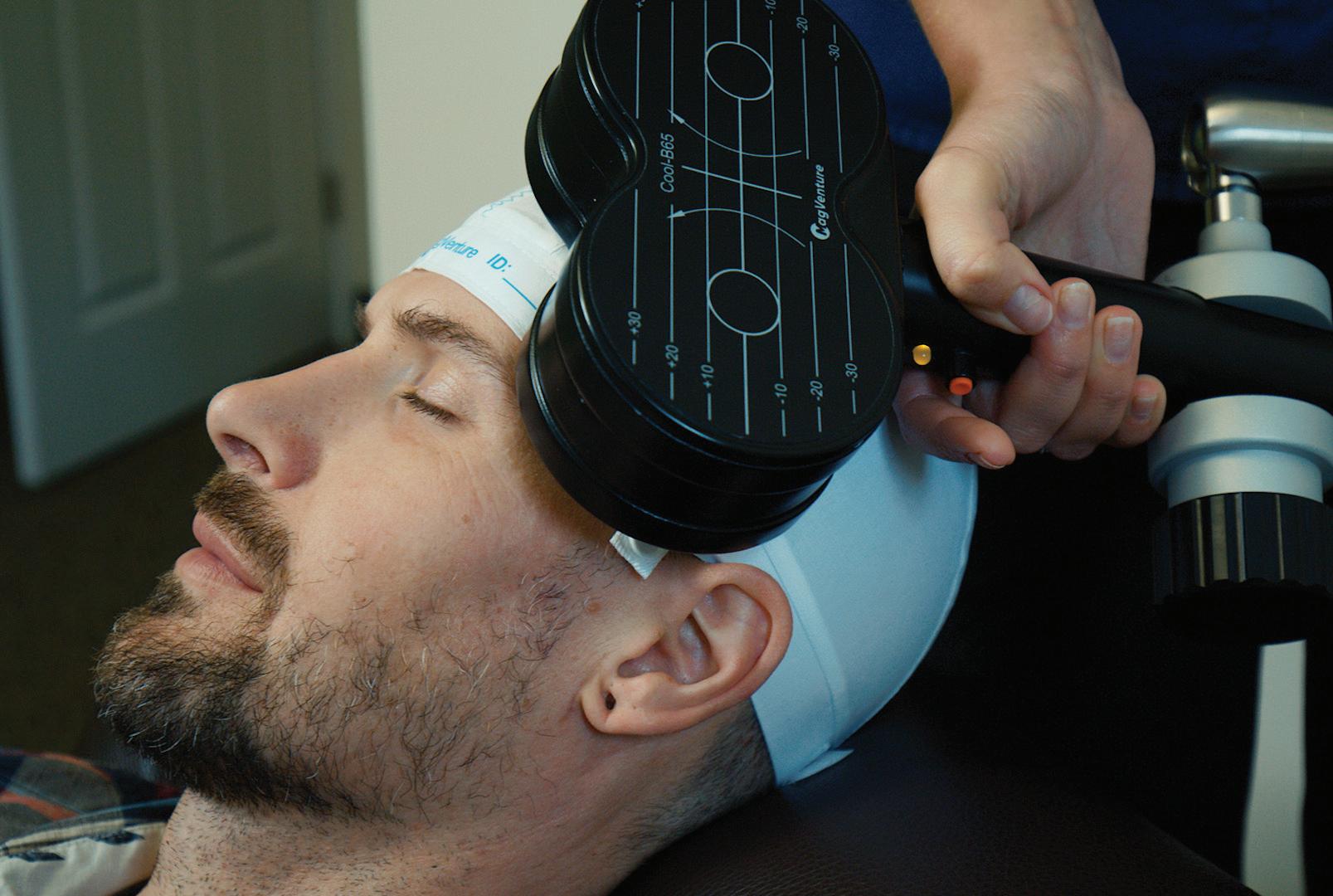
Powell River-based Sunshine
include

service,
hour-






rTMS,
the Department of National Defence and
Canada